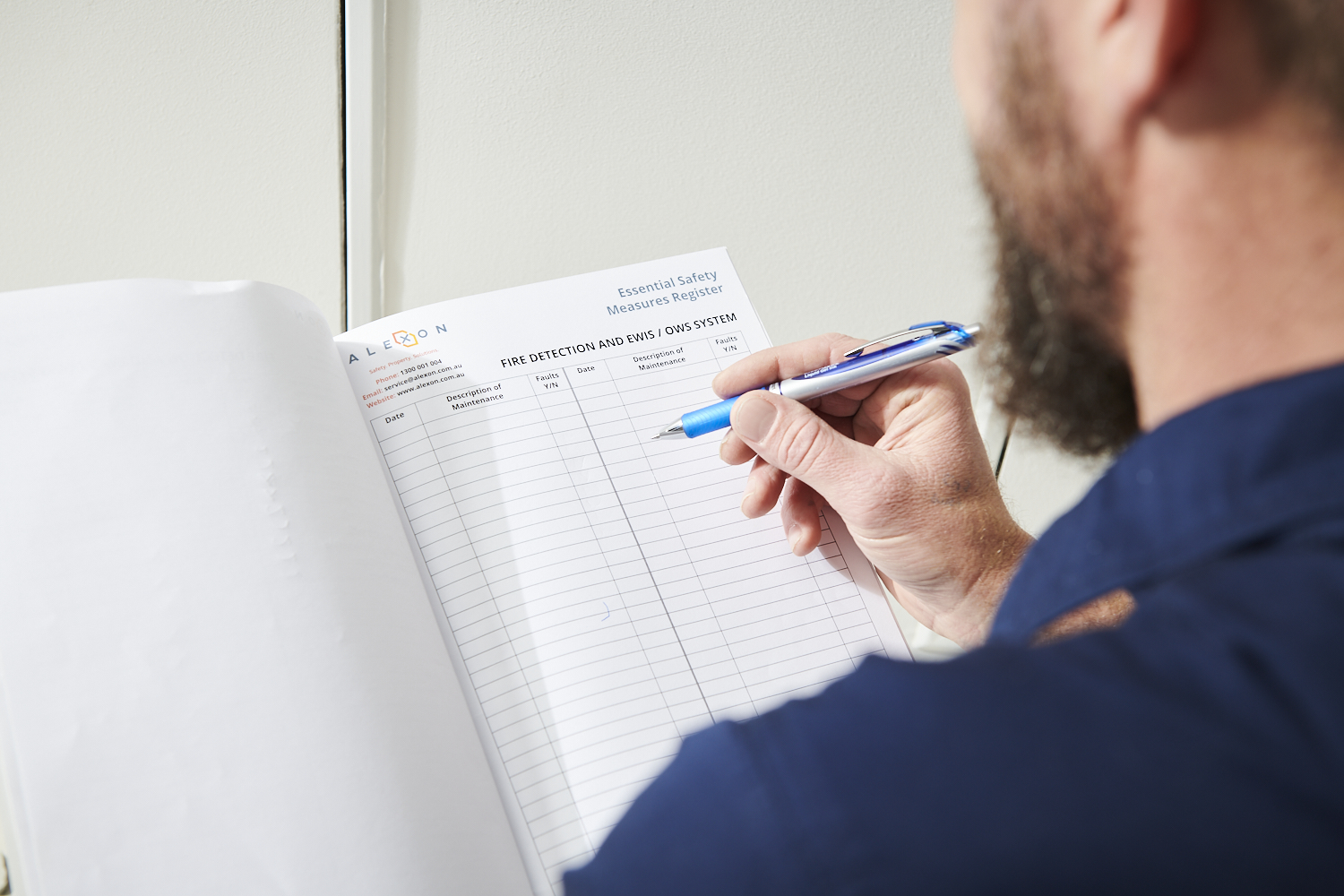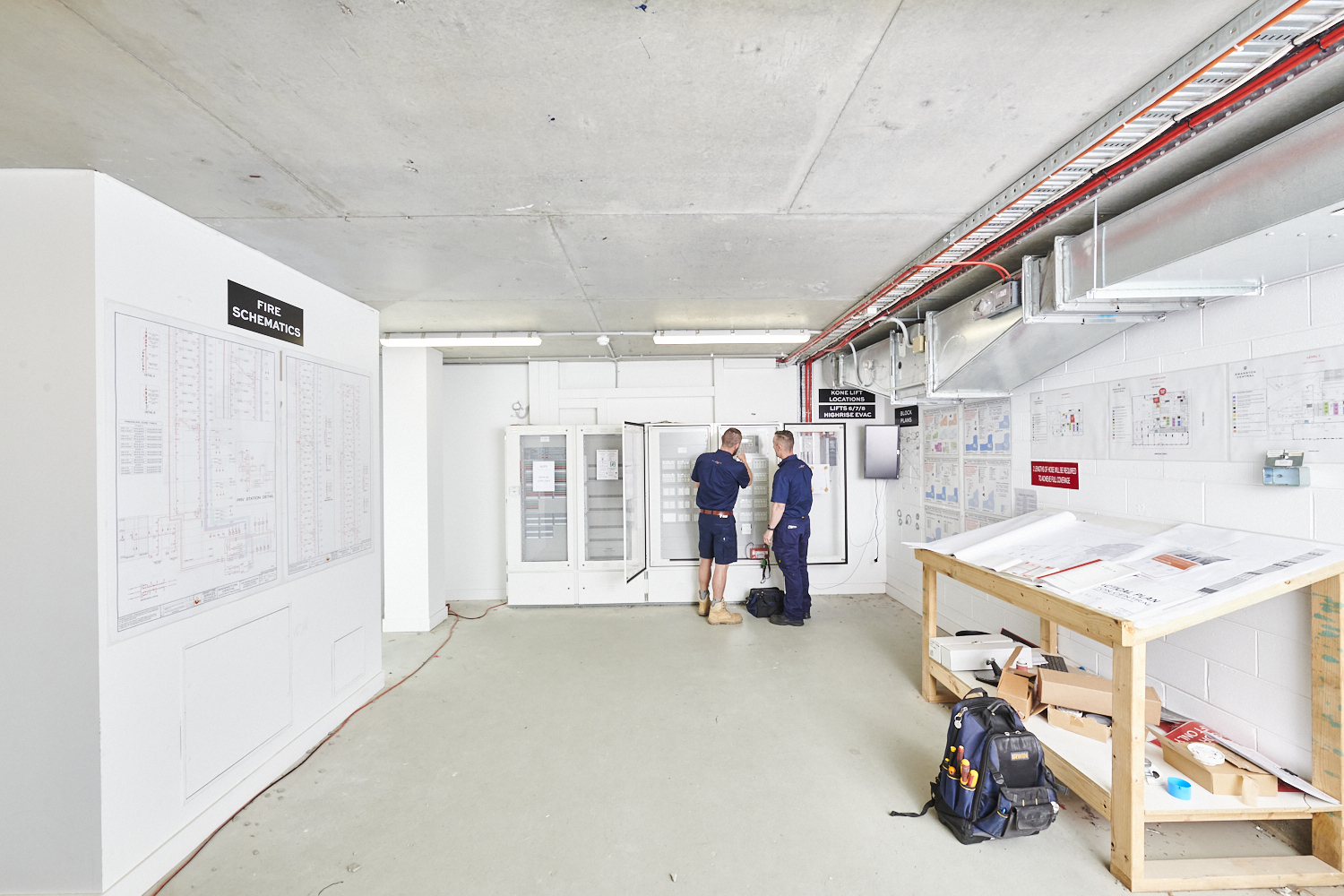1300 001 004

In one of our previous blogs, we touched on some of the different fire safety standards that business owners and building managers alike must adhere to in Australia. This outlined the different Australian fire safety standards as they all pertain to their own types of fire safety equipment.
There is one standard in particular pertaining to multiple types of essential safety measures (or ‘ESMs’). This is Australian Standard AS1851 2012, developed to standardise the maintenance requirements of fire protection systems.
AS1851 standard specifies the routine testing, maintenance, and inspection requirements for a wide range of different ESMs which we’ll be outlining below as well as looking more closely into the regulatory requirements outlined in AS1851.
Today we will answer some FAQs such as:
AS1851 is an Australian fire safety standard developed to standardise the maintenance, testing, and inspection requirements for the many different types of fire suppression and fire detection systems. As this Australian standard refers to a wide range of different equipment, it’s common for building owners and operators to keep a copy of AS1851-2012 on-hand to refer to in tandem with their fire equipment maintenance schedule.
AS1851 outlines all the regulatory requirements that must be met in order for buildings and work premises to maintain compliance with state and federal fire safety standards. In Australia, each state has its own legislation developed to enact AS1851 under Australian Law. You can find a full copy of AS1851-2012 at Standards Australia, or you can find additional resources on the Victorian Building Authority (VBA) website, the Country Fire Authority (CFA), or even with your trusted fire safety technicians.
The following is covered:

AS1851 has been developed to provide a generalist overview of maintenance requirements for all the fire equipment outlined above. This generalist overview is valuable as the fire equipment can be installed in a wide range of different commercial and residential settings.
It is also important to note that AS1851 doesn’t include in-depth instructions for installing fire equipment in industry-specific settings ie. commercial kitchens. As a result, business owners working in specialised industries such as hospitality, must also refer to the Australian Standards pertaining to those industries (i.e. AS3772, detailing fire protection of cooking areas).
Alongside this, AS1851 doesn’t explicitly include maintenance requirements for emergency and exit lighting. Requirements for these ESMs can be found in AS2293.
The best way to meet AS1851 standards is by booking routine testing and maintenance appointments with your fire safety technicians and by fulfilling your equipment logbook and ESM reporting responsibilities.
It’s also valuable to read through the regulations outlined in AS1851-2012 yourself, and understand the terminology used across this Australian Standard. To support your efforts here, we’ve compiled a list of some of the more prominent terms you can expect to come across when reading over AS1851-2012.

In short, maintaining compliance with AS1851 standards requires building managers and business owners to stay up-to-date with maintenance, testing, inspection scheduling, and reporting in accordance with maintenance timelines for all the fire equipment and systems that can be found on-site. Practising a step-by-step approach can help simplify meeting AS1851 requirements during your fire equipment inspection appointments.
Here’s an overview of the four-stage approach outlined in Section 1 of AS1851-2012:
A physical inspection of all fire equipment and fire protection systems. This initial phase helps to detect any visible faults or signs of damage that may inhibit your ESMs from being effective in the event of a fire-related emergency.
A technical inspection that involves controlled testing of all fire equipment and fire protection systems found on-site. These tests are vital to ensuring that all installed ESMs are operating correctly and can also be safely handled by personnel or building occupants in the event of a fire-related emergency.
Carrying out routine maintenance and servicing requirements for all ESMs installed on the worksite or premises. This stage helps to ensure that all tested equipment can continue to perform at a standard that complies with AS1851.
Completing maintenance logbooks for all serviced fire equipment, as well as collating ESM reports. The record-keeping stage of ensuring AS1851 compliance will also typically include developing your AFSS report (or ‘annual fire safety statement’).

As Australian state governments maintain their own legislation for AS1851, penalties for non-compliance can vary from fines and other legal liabilities to prison sentences in cases of gross negligence. Penalties can be severe on the basis that non-compliance with AS1851 can result in injuries, property damage, and in worst cases, the loss of life in the event of a fire-related emergency.
If you are found non-compliant, the best solution is to rectify any identified critical defects and non-conformance as promptly as possible and to secure an emergency testing and maintenance appointment with your local fire safety technicians.
Maintaining AS1851 compliance is vital for ensuring the safety and wellbeing of your personnel or building residents and other occupants. Understanding all the requirements outlined in AS1851 and keeping track of maintenance schedules for all fire equipment and protection systems installed in your building or workplace is paramount to staying compliant.
If you’re looking to book fire equipment maintenance or testing services to help your building maintain its AS1851 compliance, then contact our team at Alexon to secure your next scheduled fire safety appointment. Call 1300 001 004 to book your appointment today.

Complete the form to request a call
from a friendly Alexon team member.